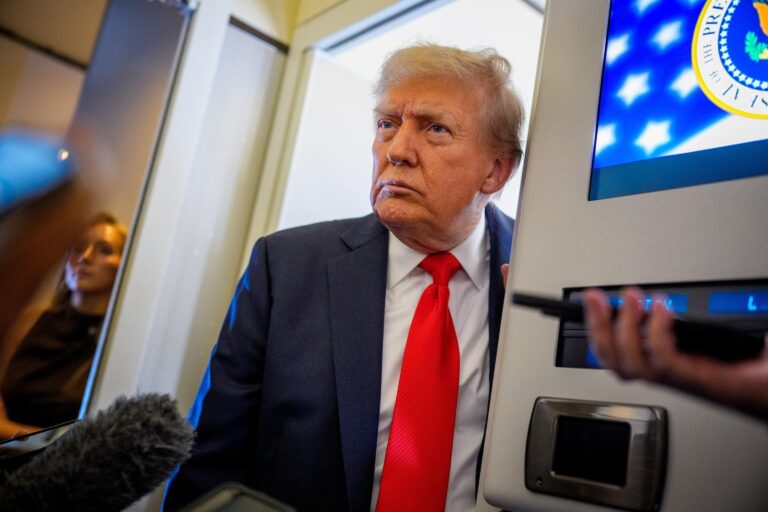Illinois Defends Mail-In Voting Amid National Controversy Over Election Integrity
National Controversy Erupts Over Mail-In Voting Following Trump’s Campaign
Former President Donald Trump’s intensified efforts to abolish mail-in voting have sparked a fierce nationwide debate, sharply dividing opinions on election security and voter accessibility. While critics argue that absentee ballots open the door to fraud, Illinois election officials stand firm, asserting that fraudulent activity in the state is exceptionally uncommon. They highlight a comprehensive system of safeguards-including signature authentication,barcode tracking,and bipartisan oversight-that collectively uphold the credibility of mail-in ballots. This confidence contrasts with skepticism voiced in other parts of the country.
Illinois’ election administrators have implemented multiple layers of security to foster voter trust, such as:
- Real-Time Ballot Tracking: Voters receive updates when ballots are dispatched and returned, enhancing openness.
- Signature Authentication: Each mail-in ballot is meticulously checked against voter records to verify identity.
- Cross-Party Monitoring: Representatives from different political parties supervise the counting process to ensure fairness.
- Strict Legal Penalties: Severe consequences are enforced for any attempts at ballot fraud or tampering.
| Security Feature | Function |
|---|---|
| Barcode Tracking | Allows voters and officials to monitor ballots throughout the process |
| Signature Verification | Prevents forgery by matching signatures to official records |
| Bipartisan Oversight | Ensures impartiality during ballot counting |
| Legal Enforcement | Discourages fraud through fines and imprisonment |
Data Confirms Mail-In Ballot Fraud Is Nearly Nonexistent in Illinois
Comprehensive analyses from Illinois election authorities reveal that fraudulent mail-in ballots are exceptionally rare. The Illinois State Board of Elections reports that stringent verification and security protocols effectively protect the integrity of absentee voting. Recent audits indicate that fraud occurs in less than 0.01% of mail-in ballots, reinforcing the system’s dependability despite persistent national doubts.
Highlights from Illinois’ election data include:
- Mandatory signature verification for every absentee ballot to confirm voter identity.
- Secure chain-of-custody procedures that safeguard ballots during transport and storage.
- Regular independent audits designed to detect and address any irregularities.
| Year | Mail-In Ballots Submitted | Confirmed Fraud Cases |
|---|---|---|
| 2018 | 2.1 million | 5 |
| 2020 | 3.8 million | 7 |
| 2022 | 3.5 million | 4 |
Experts Warn Against Undermining Confidence in Absentee Voting
Authorities and election integrity specialists caution that efforts to dismantle mail-in voting risk eroding public trust in democratic institutions. Despite politically charged rhetoric targeting absentee ballots,evidence from Illinois and other states consistently shows that voter fraud is extremely infrequent. Experts stress the importance of preserving secure and accessible voting options, especially in light of ongoing concerns about voter suppression and disenfranchisement. As one election analyst remarked, “Weakening these systems could have lasting repercussions not only on voter participation but also on the basic trust in election outcomes.”
Recent election cycles demonstrate that layered security measures-such as signature verification, barcode tracking, and obvious auditing-have maintained the integrity and efficiency of absentee voting. Rather than pursuing aggressive legislative restrictions, experts advocate for enhanced public education and open auditing to strengthen voter confidence. The table below summarizes key absentee ballot statistics from Illinois:
| Metric | 2018 Midterm Elections | 2020 General Elections |
|---|---|---|
| Absentee Ballots Cast | 2.5 million | 4.7 million |
| Reported Fraud Incidents | 3 | 7 |
| Verification Success Rate | 99.9% | 99.97% |
- Strict chain-of-custody protocols protect ballots from mailing through counting.
- Multi-tiered verification minimizes opportunities for fraudulent activity.
- Independent audits enhance transparency and reinforce public trust.
Balancing Election Security Enhancements with Voter Accessibility
Election officials emphasize that bolstering security should not compromise voter access. Achieving this balance requires investment in advanced voting technologies featuring strong encryption and multi-factor authentication. Regular audits and transparent reporting mechanisms further build public confidence while safeguarding ballots from interference. The integration of secure drop boxes, combined with rigorous chain-of-custody standards, offers a practical solution to maintain the convenience of mail-in voting without sacrificing security.
Recommended strategies to enhance election security include:
- Introducing biometric authentication for election workers to prevent unauthorized access.
- Expanding cybersecurity training programs for county election officials.
- Increasing bipartisan poll monitoring to promote transparency.
- Launching comprehensive public education campaigns to combat misinformation.
| Security Initiative | Expected Benefit | Projected Cost |
|---|---|---|
| End-to-End Verifiable Paper Ballots | Enhanced auditability and voter confidence | $1.2 million |
| Cybersecurity Infrastructure Upgrades | Improved defense against digital threats | $2.5 million |
| Public Outreach and Education | Increased voter trust and awareness | $300,000 |
Conclusion: Upholding Trust in Mail-In Voting Amid Political Challenges
As the national conversation around mail-in voting grows increasingly contentious, Illinois election officials continue to affirm that fraud remains a negligible concern within their jurisdiction. Their steadfast dedication to election integrity highlights the complexities faced by election systems nationwide. Moving forward, policymakers and voters alike must weigh these realities carefully, recognizing that the security and dependability of mail-in ballots are vital components in shaping the future of American democracy.





